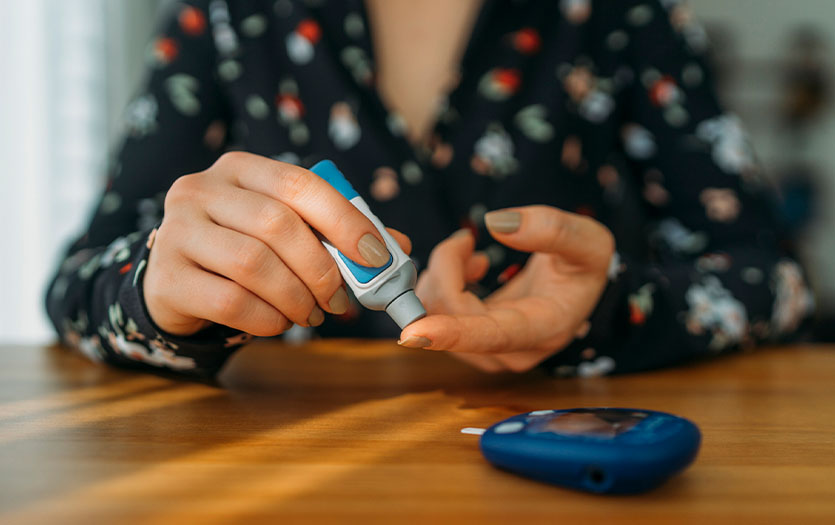
This post was written by Stacy Kahl, NP, PPG – Endocrinology.
The American Diabetes Association defines blood sugar as, the main source of energy that food is turned into that’s found in the blood. If you have diabetes, whether it’s type 1, type 2 or gestational, it’s important to monitor glucose levels via the blood or a continuous glucose monitor (CGM).
Without monitoring, you may not show any signs or symptoms of levels being too high or too low in the body. This is dangerous, as an abundance of glucose in the body can be very damaging to your organs and nervous system and increase your risk of cardiovascular disease.
Additionally, without monitoring your glucose levels, we may not know how you are responding to lifestyle interventions such as exercise, low carbohydrate diet or prescription management. As a healthcare provider, I strongly rely on my patients' monitoring of glucose levels to guide my practice and implementation of interventions.
What happens if blood sugar becomes too high or too low?
High or low levels can both be extremely dangerous and damaging to the body. A blood sugar level of 70 mg/dL or less is considered low and is known as hypoglycemia. Symptoms of low and high blood sugar often mimic each other. Symptoms to watch for include lightheadedness, dizziness, tremors of the hands and or body, sweating, confusion or difficulty concentrating, or an intense sensation of hunger. Since symptoms tend to be similar, it is important to check your blood sugar level with a finger stick or continuous glucose monitor.
Here are some glucose monitoring goals to keep in mind throughout the day:
- In the morning before breakfast levels should be between 90 mg/dL-130 mg/dL.
- Checking levels before meals should be less than 150 mg/dL.
- Levels two hours after eating should be 180 mg/dL or less.
If you are having trouble meeting these monitoring goals, please speak with your primary care physician or endocrinologist. For pregnant individuals, these goals can differ and should be discussed with your provider.
Natural ways to lower your blood sugar:
Stay hydrated. Drinking plenty of water throughout the day will help dilute the blood glucose levels in your blood stream. It also helps your kidneys to filter out the abundance of glucose from the blood stream and urinate, thus lowering the glucose levels in the body.
Avoid stagnation. Physical activity such as going on walks will help burn off the extra glucose in the blood stream. Having exercise equipment at home, such as a stationary bike or treadmill helps patients stay active during the winter but isn’t necessary to get in extra activity. I encourage my patient to find new ways or excuses to get in more walking during the day. In the winter, it can be harder to get outside and walk, but try to find some alternatives. For example, you can park further out in the parking lot at stores, then when in a store walk laps around the store before your shopping. Simply pacing in your house will even help lower blood glucose levels. I recommend 150 minutes of exercise every week.
Prioritize a low carbohydrate diet. Maintaining a balanced diet focusing on a variety of fruits, vegetables, whole grains and lean proteins is a great way to help manage your blood sugar. To maximize your dietary efforts, opt for low carbohydrate food choices as often as possible especially if you use insulin. Counting carbohydrates can allow individuals to adjust the amount of insulin they use and eat more of the foods they want, all while keeping their blood sugar in range.
Use a continuous glucose monitor (CGM). CGMs such as FreeStyle Libre ® or Dexcom ®, often helps patients monitor blood glucose levels more frequently and allow patients to make changes with their lifestyle. My patients have told me that they had no idea diet and exercise affected their blood sugar levels so much. With these devices, patients can see how their blood sugar level responds to certain foods and exercise. This allows them to make diet changes in real time and see positive feedback through their blood sugar levels.
At Parkview, you have access to health professionals who are dedicated to helping you manage various aspects of your health. The Diabetes Services team or your PPG - Endocrinology provider can assist you in managing your blood sugar levels. If you need help finding the right provider for you, call our Access Center at 877-PPG-TODAY or 877-774-8632 for assistance.



